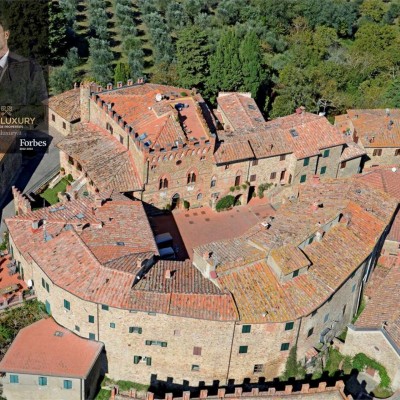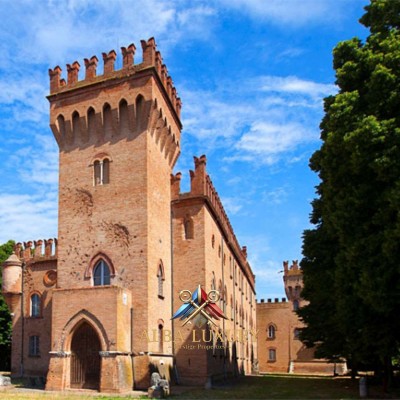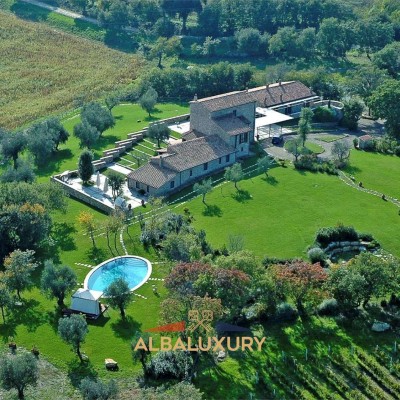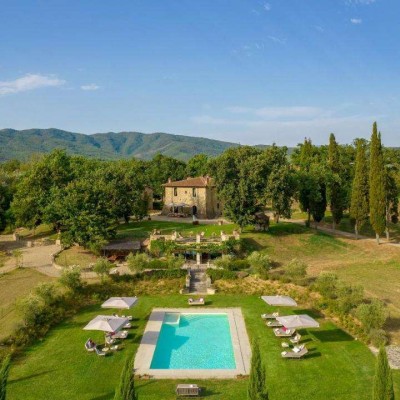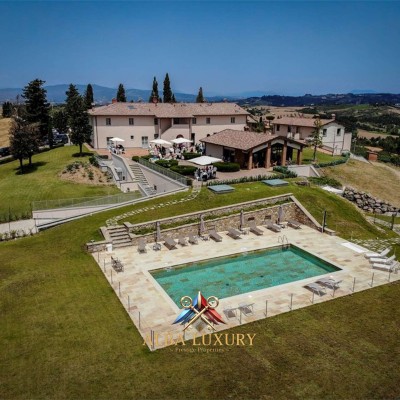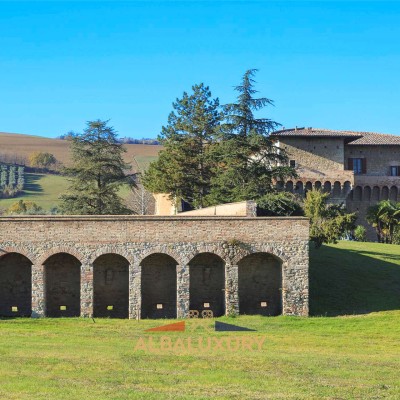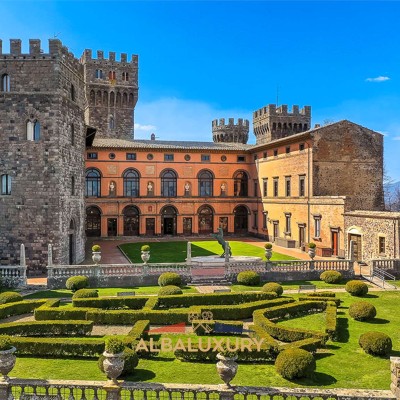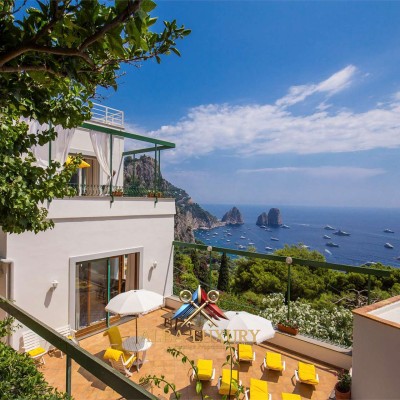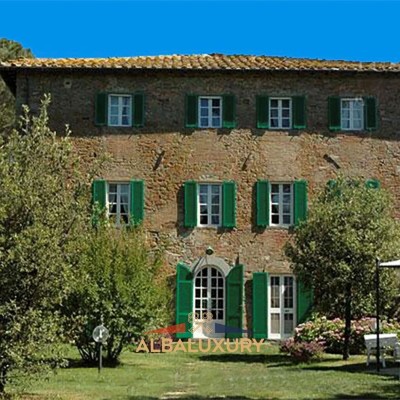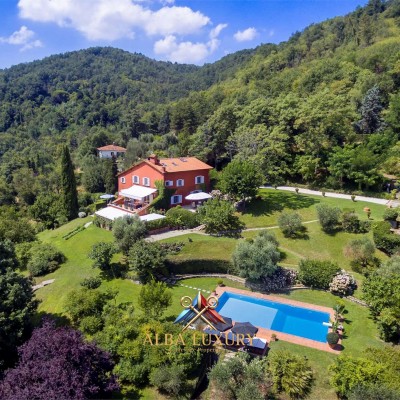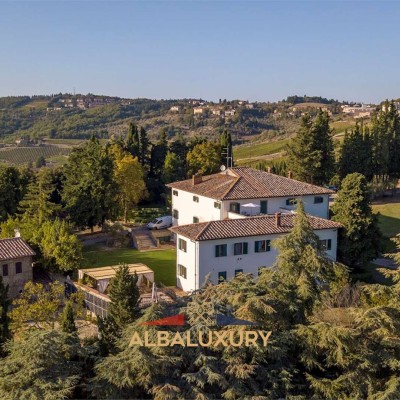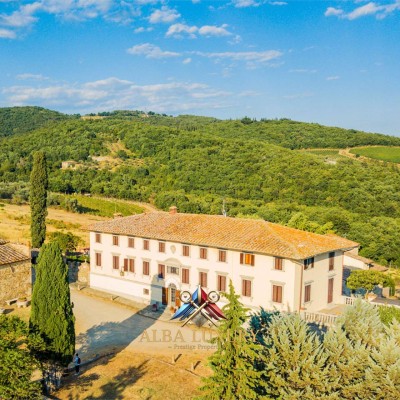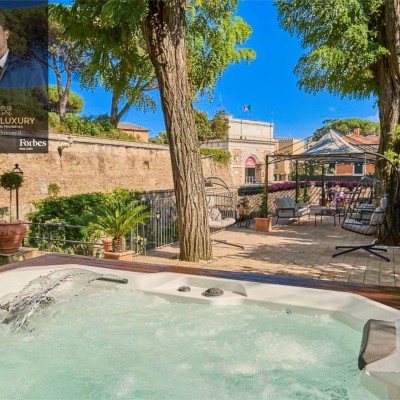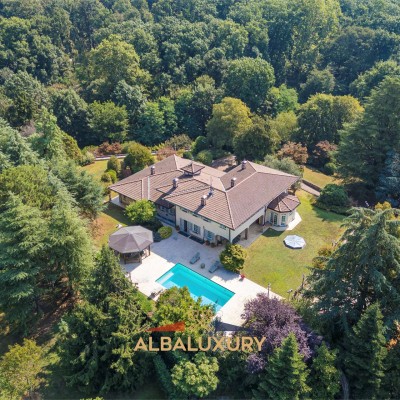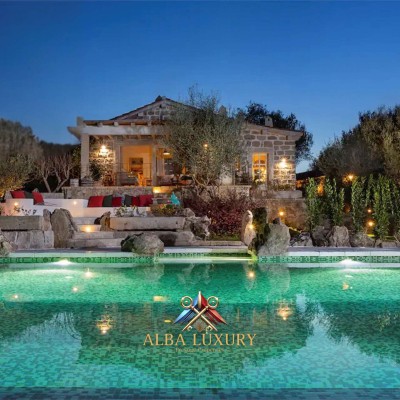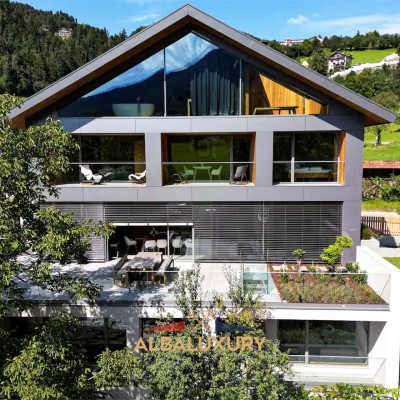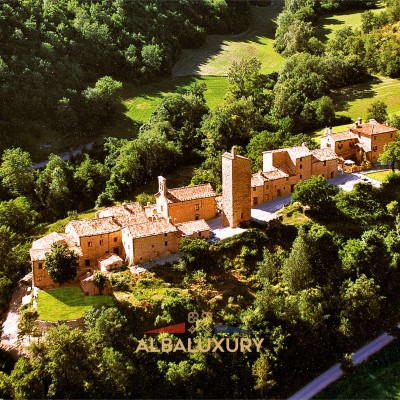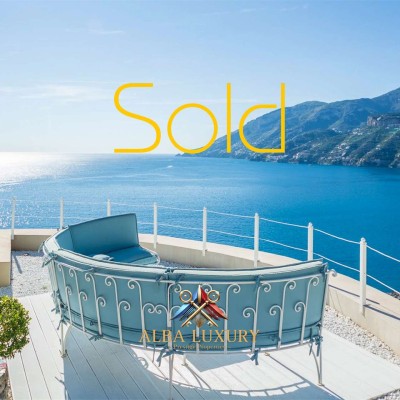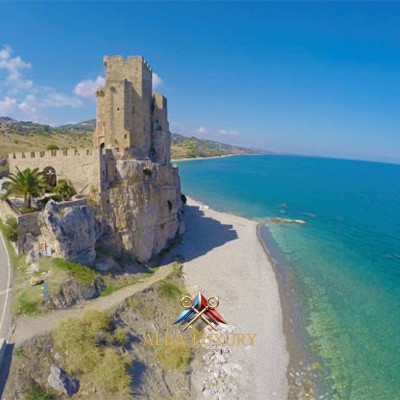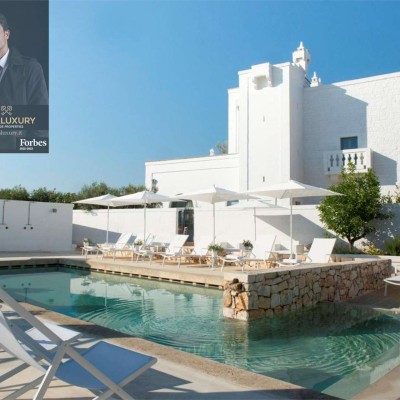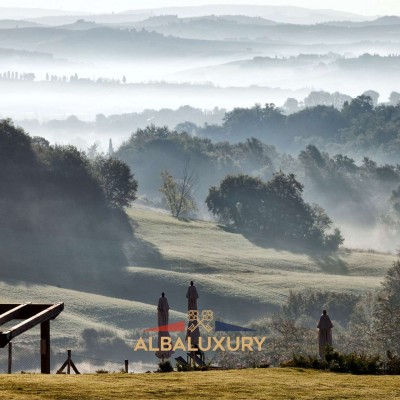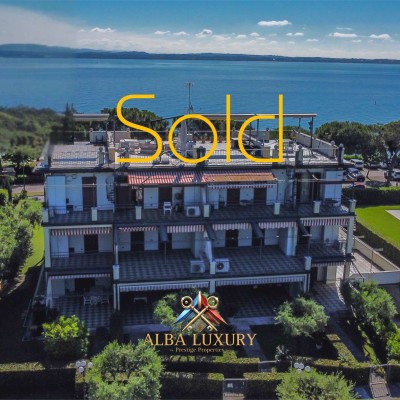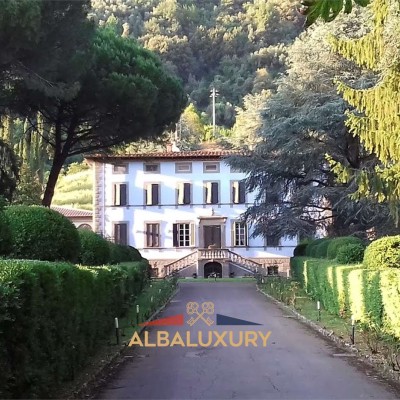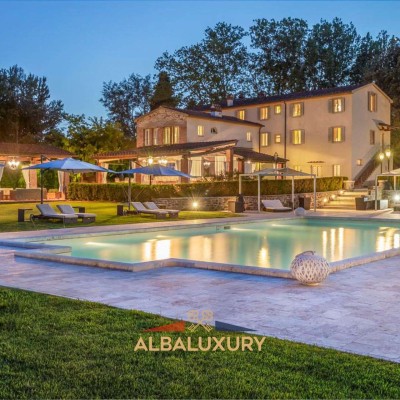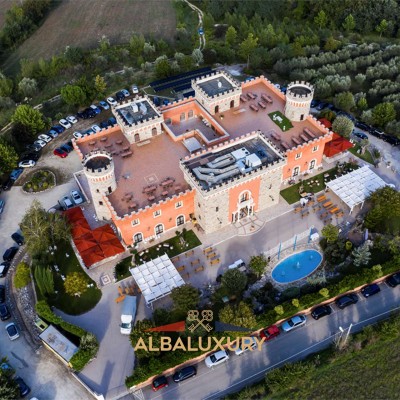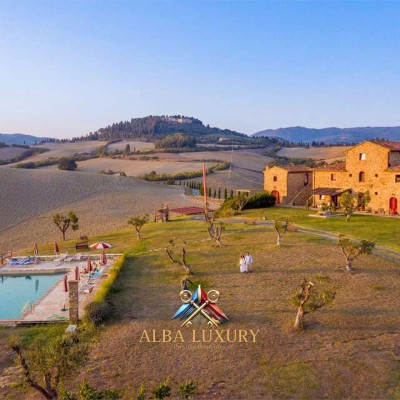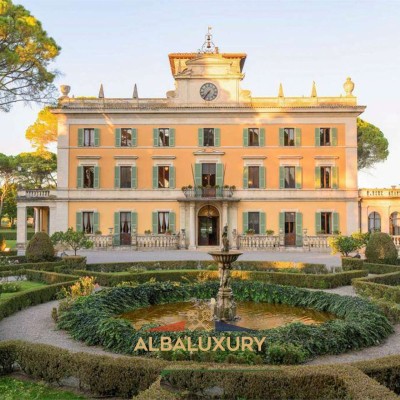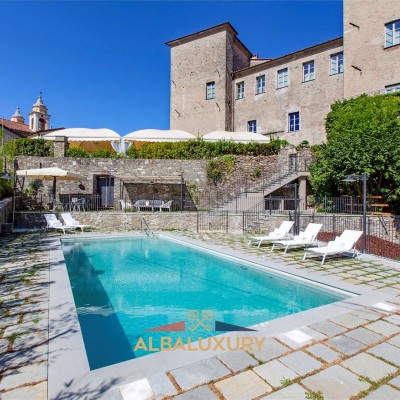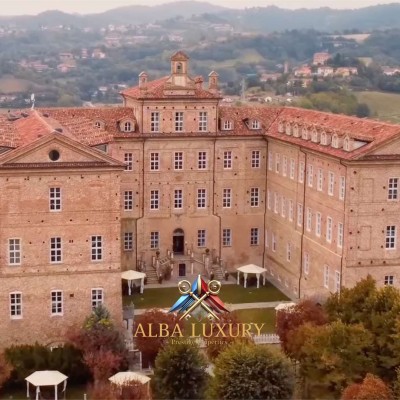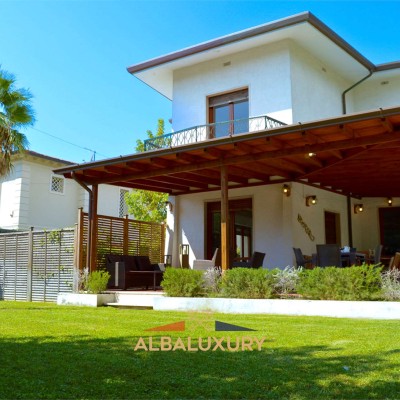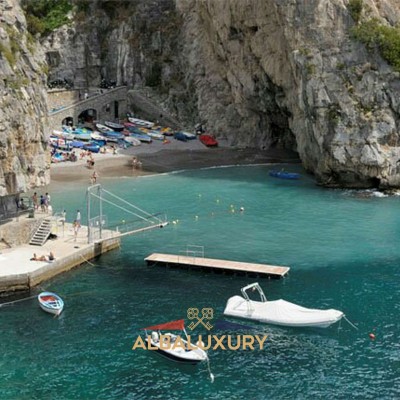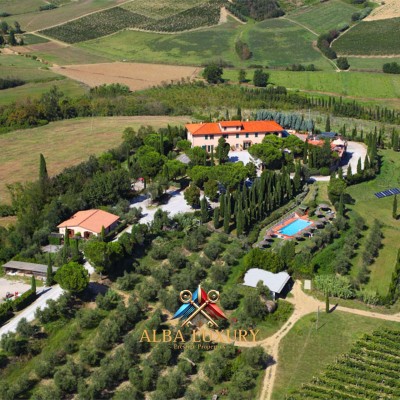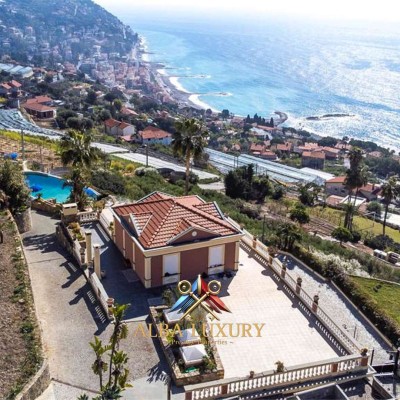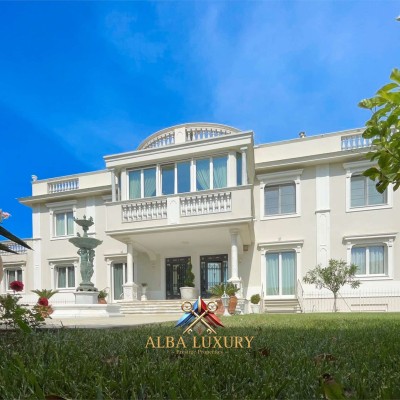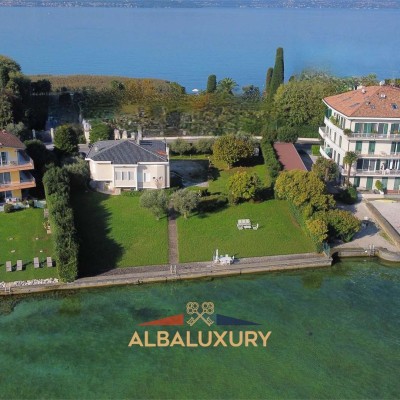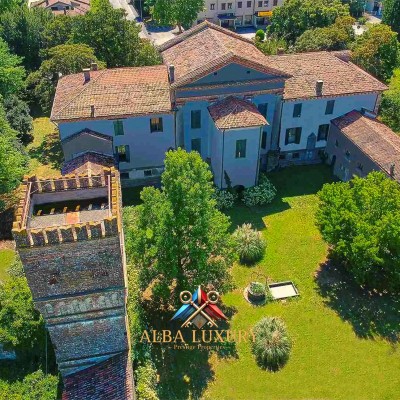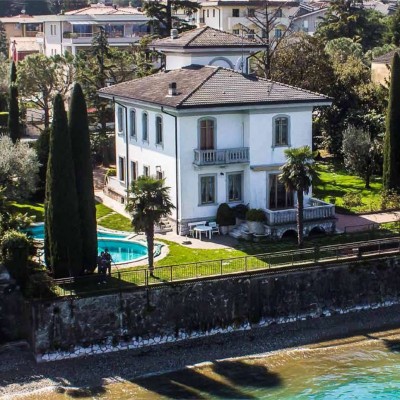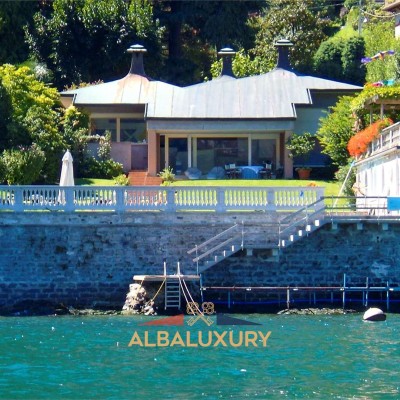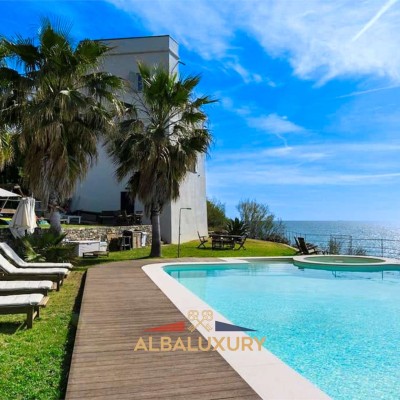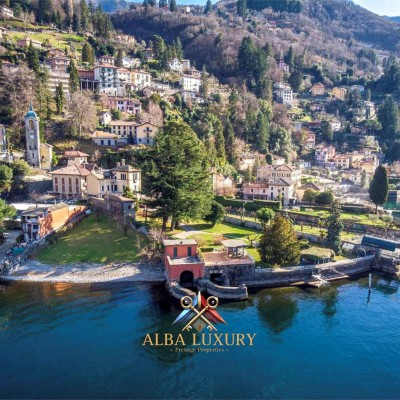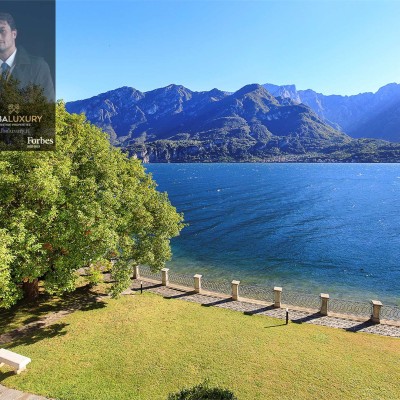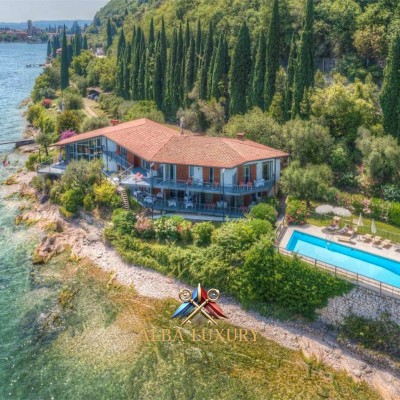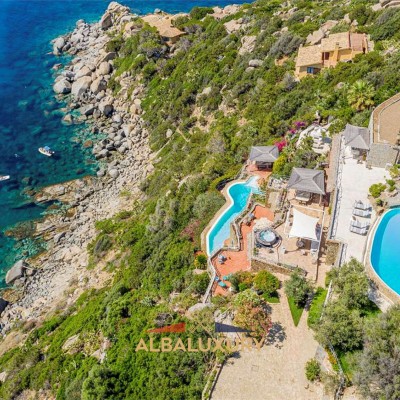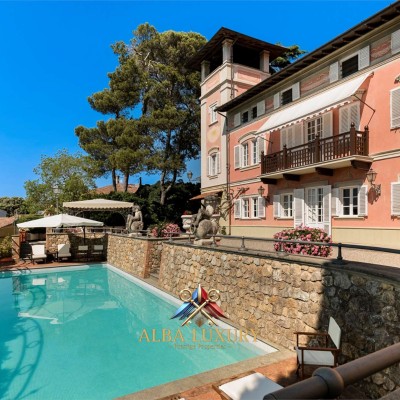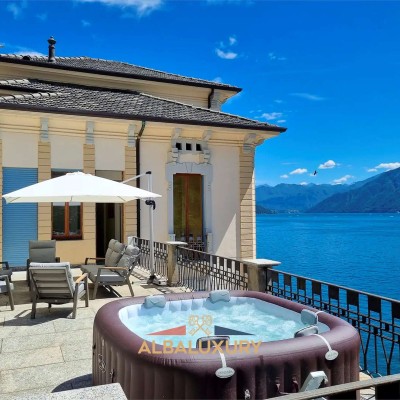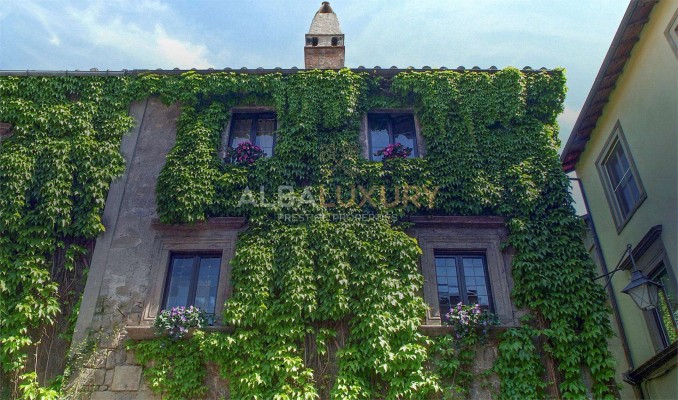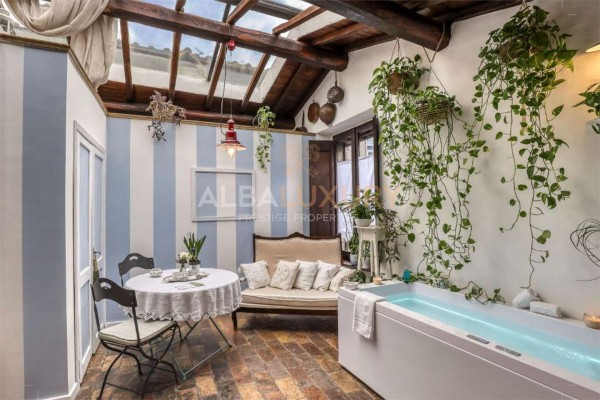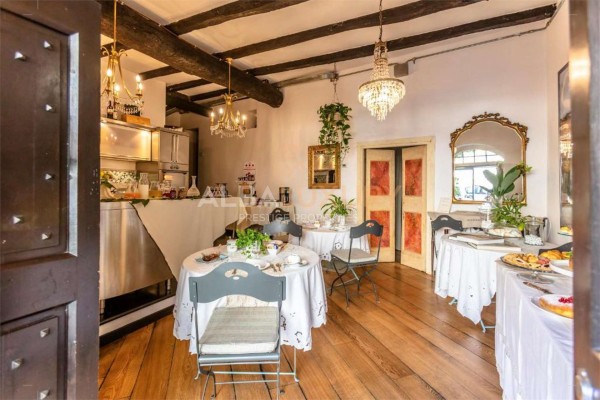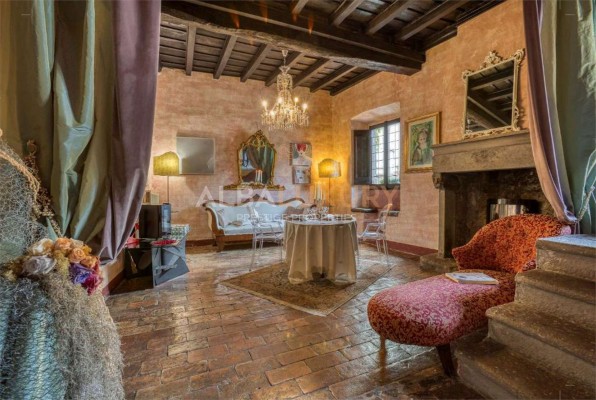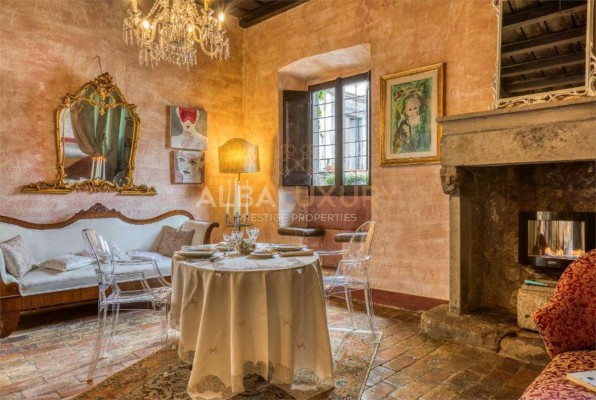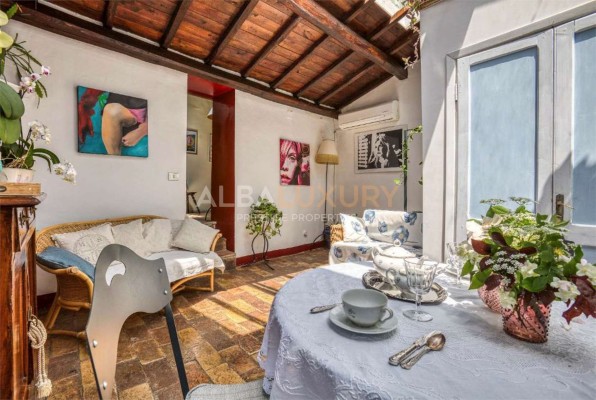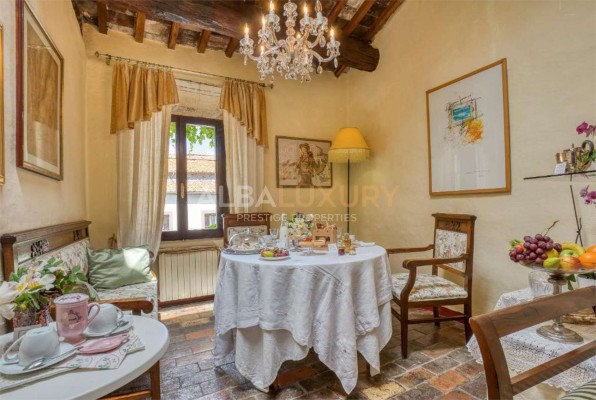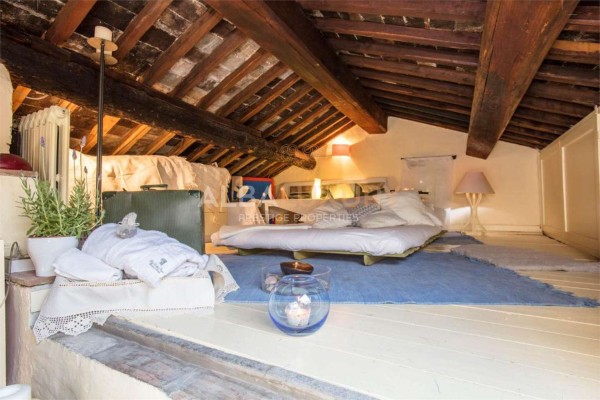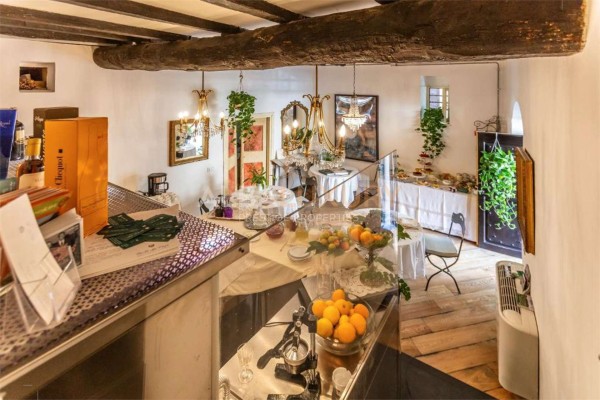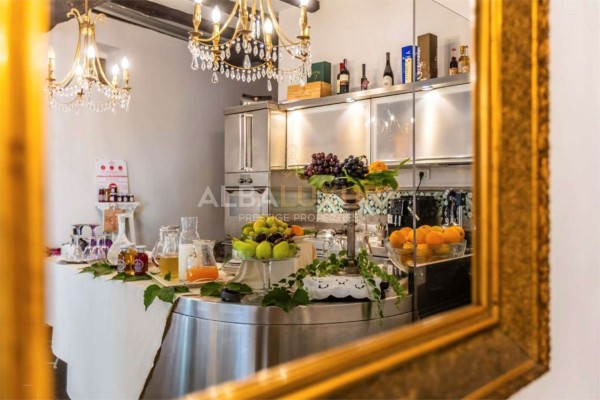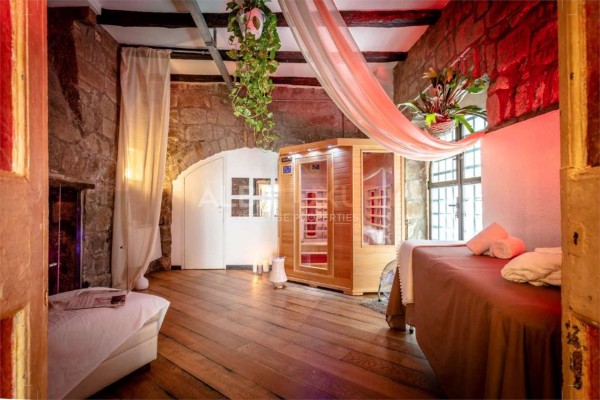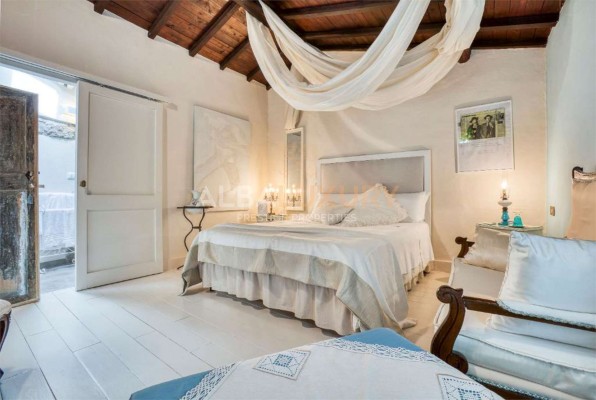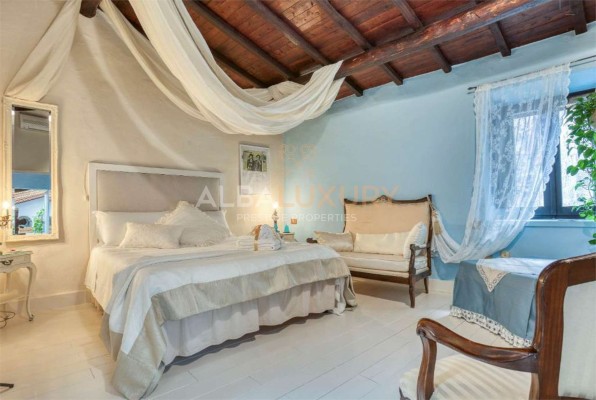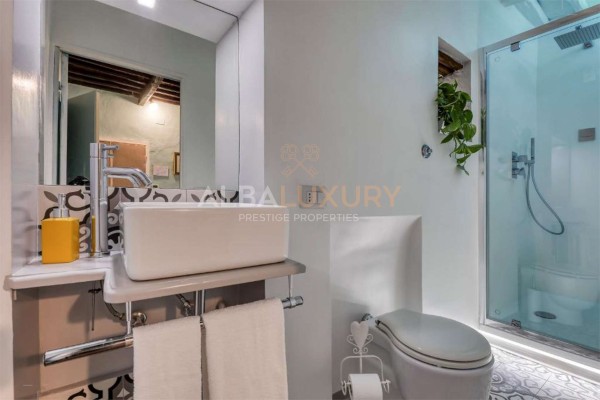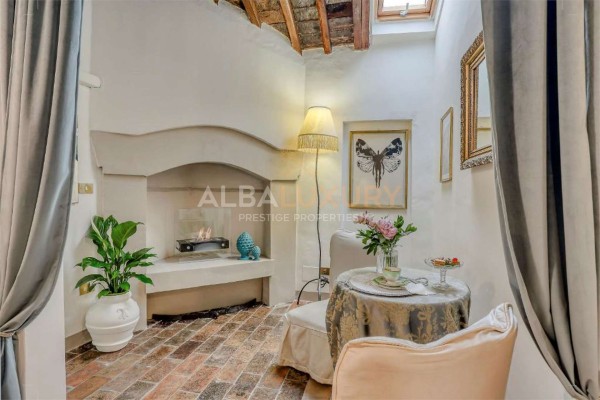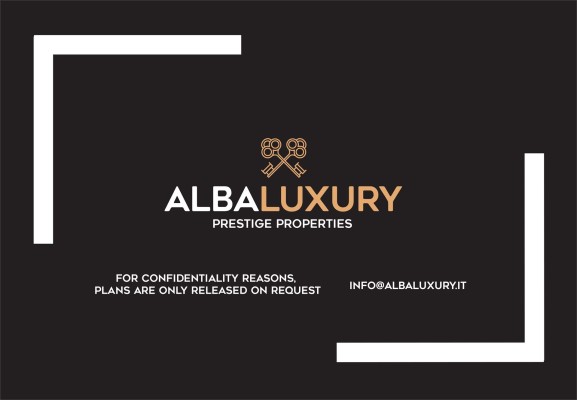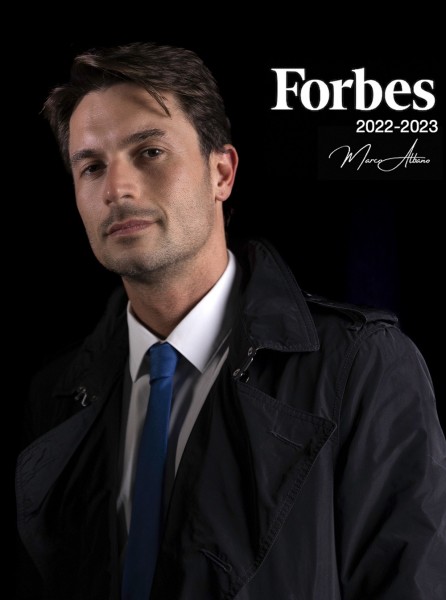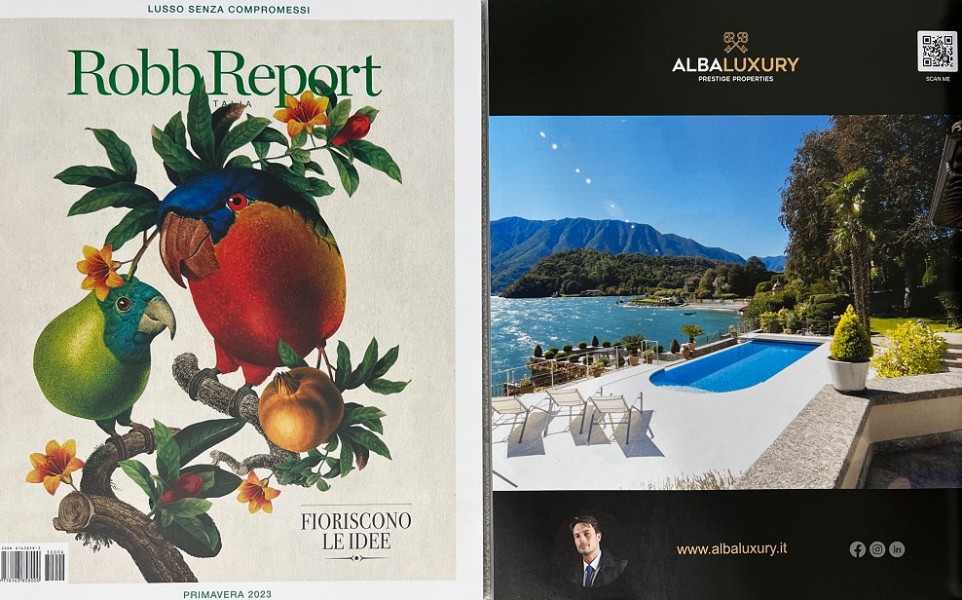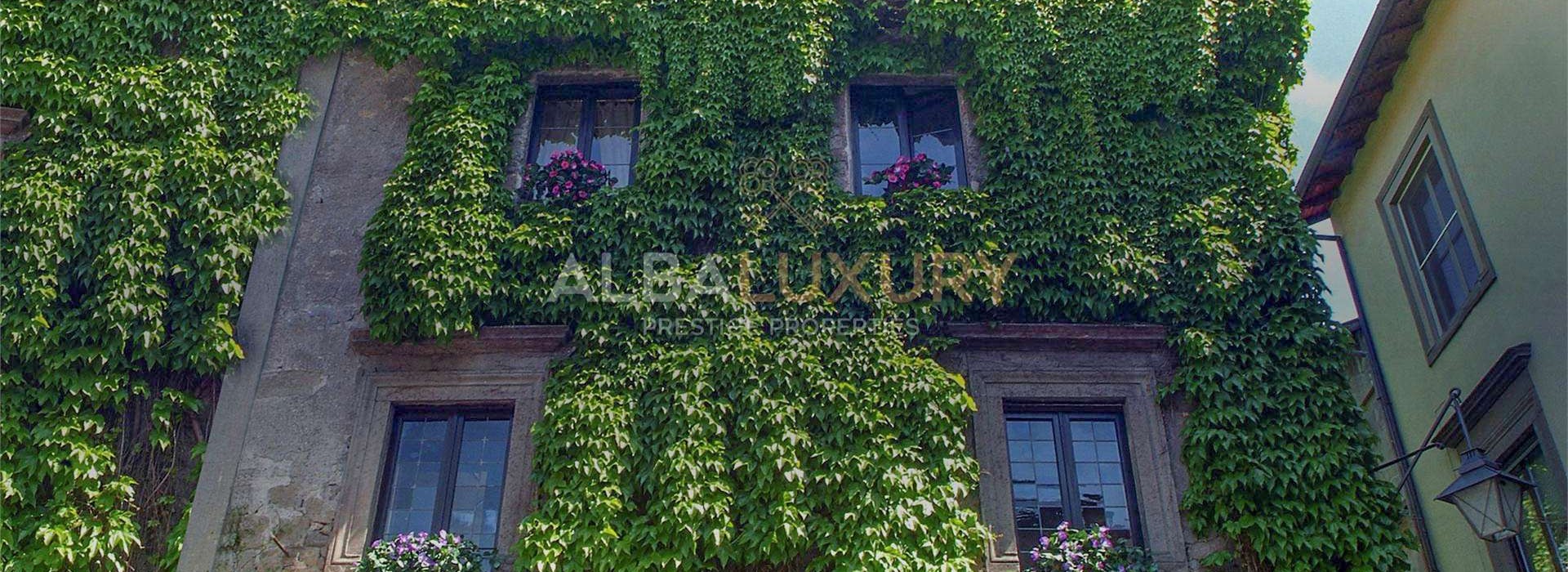
Historical building with spa in Viterbo
Lazio 002Description
This historic building is suitable for people who seek charm and creative flair in a historic residence where the combination of ancient and contemporary art is perfectly combined.
The furnishings of the building, currently a b&b, are unique and meticulously detailed, embellished with trendy decorations and details, a skilful blend of design and elegance overseen by the owner, who makes an art of hospitality.
Just a stone's throw from the Duomo, it overlooks a small square, or rather a street that turns into a square as if it wanted to be more welcoming.
At the end of the 13th century, the leaders of the Ghibelline party lived here, the noble family of the Tignosi of Mainz, who were fiercely opposed to the Gatti, standard-bearers of the Guelphs.
During the Renaissance, just as Palazzo Farnese stood next door, the Maganzese ceded the building to the Confraternity of Oration and Death.
It was only in modern times that the building was dismembered into different properties, until the current owners took them over, restoring the unified destiny of this ancient dwelling.
Territory:
Viterbo, an ancient city with a thousand facets, boasts a vast historic centre dating back to medieval times, surrounded by ancient walls dating back to the 12th century AD.
To the west of the Viterbo territory lie vast archaeological and thermal areas, dating back to even earlier times, probably attributable to the Etruscan and Roman periods. Although the certain history of Viterbo begins to be defined in the early Middle Ages.
Known since time immemorial as 'The City of Popes'. in the Middle Ages it held the role of Capital of Christendom and for a long time remained under the protective wing of the Papal system.
It was only with the advent of the Kingdom of Italy that there was real detachment from the papal system and the annexation of Viterbo to the province of Rome. On this occasion, the city lost its status as capital, only to regain it in 1927, thanks to a reorganisation of the provincial districts carried out in those years.
Viterbo has seen its greatest development in recent decades, with the birth of the University of Tuscia, the choice of Viterbo as the seat of the Archaeological Superintendence for Southern Etruria and the 'Tommaso Fabbri' military airport, with its barracks of the Air Cavalry Centre, the Air Force Marshals' School and the Army Non-Commissioned Officers' School.
The pride of the city and an integral part of its economic development are the small businesses in the agricultural, food and ceramic sectors.
Active in tourism, thanks to its ancient history and exceptional thermal resources, it has always attracted visitors of all ages.
In fact, there are many events in the city throughout the year, especially in the summer. One of the most important is the Macchina di Santarosa: an evocative event in which the translation of the body of Santa Rosa, ordered by Pope Alexander IV in 1258, is re-enacted by means of a triumphal canopy.Viterbo, an ancient city with a thousand facets, boasts a vast historical centre dating back to medieval times, surrounded by ancient walls dating back to the 12th century AD.
To the west of the Viterbo territory lie vast archaeological and thermal areas, dating back to even earlier times, probably attributable to the Etruscan and Roman periods. Although the certain history of Viterbo begins to be defined in the early Middle Ages.
Known since time immemorial as 'The City of Popes'. in the Middle Ages it held the role of Capital of Christendom and for a long time remained under the protective wing of the Papal system.
It was only with the advent of the Kingdom of Italy that there was real detachment from the papal system and the annexation of Viterbo to the province of Rome. On this occasion, the city lost its status as capital, only to regain it in 1927, thanks to a reorganisation of the provincial districts carried out in those years.
Viterbo has seen its greatest development in recent decades, with the birth of the University of Tuscia, the choice of Viterbo as the seat of the Archaeological Superintendence for Southern Etruria and the 'Tommaso Fabbri' military airport, with its barracks of the Air Cavalry Centre, the Air Force Marshals' School and the Army Non-Commissioned Officers' School.
The pride of the city and an integral part of its economic development are the small businesses in the agricultural, food and ceramic sectors.
Active in tourism, thanks to its ancient history and exceptional thermal resources, it has always attracted visitors of all ages.
In fact, there are many events in the city throughout the year, especially in the summer. One of the most important is the Macchina di Santarosa: an evocative event in which, by means of a triumphal canopy, the translation of the body of Santa Rosa, which took place at the behest of Pope Alexander IV in 1258, is re-enacted.
specs and infos
- Building State excellent
- Internal SqM 300
- No. of rooms 4
- No. of bathrooms 8
- External sqm
- View monument
- Free sides 3
- Box & Parking spaces private
- Orientation north east

